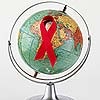
We all have some knowledge of how HIV is transmitted, but what are the facts? Dr Avron Urison breaks down the detailed facts.
Sexual Transmission
HIV is transmitted through the exchange of body fluids, and thus is principally sexually transmitted, since this is the main means of such exchange. Almost 80% of transmission is through sexual exchange of body fluids.
|
Transmission |
Risk |
|
|
Anal sex |
Very high |
The rectum is a fragile tissue prone to tears when penetration occurs. |
|
Dry sex |
Very high |
It involves the removal of the natural lubrication in the vaginal tract, increasing risk of tearing. |
|
Vaginal sex |
High |
Risk increases during a woman’s menstrual cycle, and also with the presence of sexually transmitted diseases. |
|
Kissing, lip contact |
Low–Medium |
Risk may be increased through poor oral hygiene, which includes the presence of bleeding gums and sores. |
|
Oral sex |
Low–Medium |
Risk may be increased through poor oral hygiene, which includes the presence of bleeding gums and sores. |
|
Sex with a condom / femidom |
Very low |
Providing the condom is of good quality and is placed over the penis correctly, or the femidom inserted into the vagina correctly. |
|
Intimate Touching |
Nil–Low |
Risk increases if finger penetration occurs, with cuts at the base of the finger nails. |
|
Abstinence |
Nil |
No sexual practices equals no risk |
The risk of sexual transmission of HIV varies vastly, due to a variety of factors:
- The stage of the disease of the infected person (individuals at the time of infection and at the advanced stages of the disease have higher levels of virus in their blood and are therefore likely to be more infectious)
- The type of strain of HIV
- The infecting persons sexual health (for example: the presence or absence of sexually transmitted diseases)
- The sexual health of the person who may become infected (presence or absence of sexually transmitted diseases)
- Age (Youngsters are at greater risk due to lifestyle and greater libido, desire for sex)
- New research shows that uncircumcised men are at greater risk
Mother to child transmission
The second principle means of transmission is by means of mother to child transmission, accounting for some 630,000 infections annually in Africa. In the USA, where treatment is readily available for individuals and mothers affected by HIV, the number of infections by this means, in 2003–2004, was less than 200.
Other routes of transmission
These include:
- Intravenous drug use: Up to 10%
- Blood transfusions: 5% and
- Exposure to infection through needles etc.: 0.01%
Infection Risk
|
Infection route Sexual Intercourse |
Risk of Infection
|
|
Female-to-male transmission |
1 in 250 |
|
Male-to-female transmission |
1 in 120 |
|
Male-to-male transmission |
1 in 10 |
|
Oral Sex |
6%-8% of transmission |
|
Needles |
|
|
Needle stick |
1 in 200 |
|
Needle sharing |
1 in 150 |
|
Transfusion of infected blood |
95 in 100 |
|
Transmission from mother to infant |
|
|
Without AZT treatment |
1 in 3–5 |
|
With AZT treatment |
Less than 1 in 10 |
|
Combination antiretroviral therapy |
1 in 50 |
Infectious and non-infectious body fluids
HIV is present in the majority of body fluids, some of which are infectious and some of which are not. The majority of body fluids are infectious but many people believe that any body fluid is infectious.
|
Infectious Body Fluids |
Non Infectious Body Fluids |
|
Blood, all body fluids containing blood |
Tears |
|
Vaginal secretions |
Sweat |
|
Semen |
Saliva* |
|
Pericardial fluid (surrounding the heart) |
Nasal secretions* |
|
Peritoneal fluid (covering organs in abdomen) |
Vomit* |
|
Pleural fluid (surrounding lungs) |
Faeces* |
|
Cerebrospinal fluid (inside spinal cord and brain) |
Urine* |
|
Amniotic fluid (surrounds child in womb) |
|
*If any of the above are mixed with blood they could be considered infectious
(Dr Avron Urison, February 2012)
Dr Avron Urison is Medical Director at AllLife Pty Ltd - providers of life insurance for HIV positive individuals – www.alllife.co.za




 Publications
Publications
 Partners
Partners














